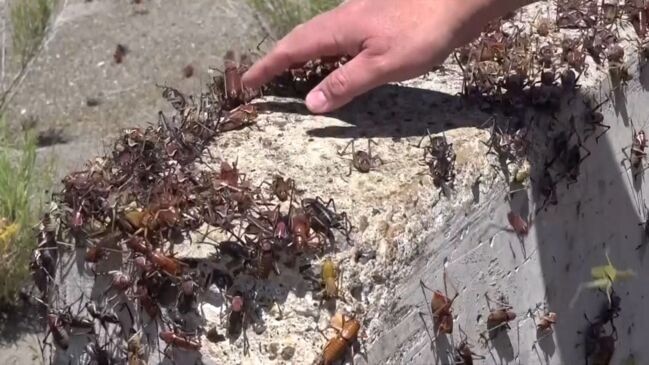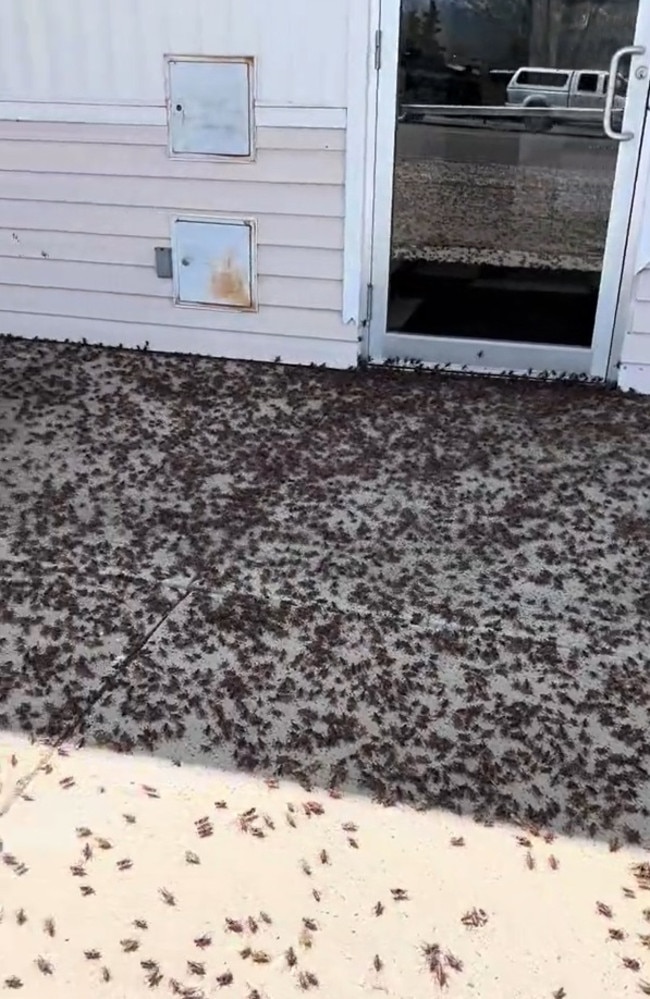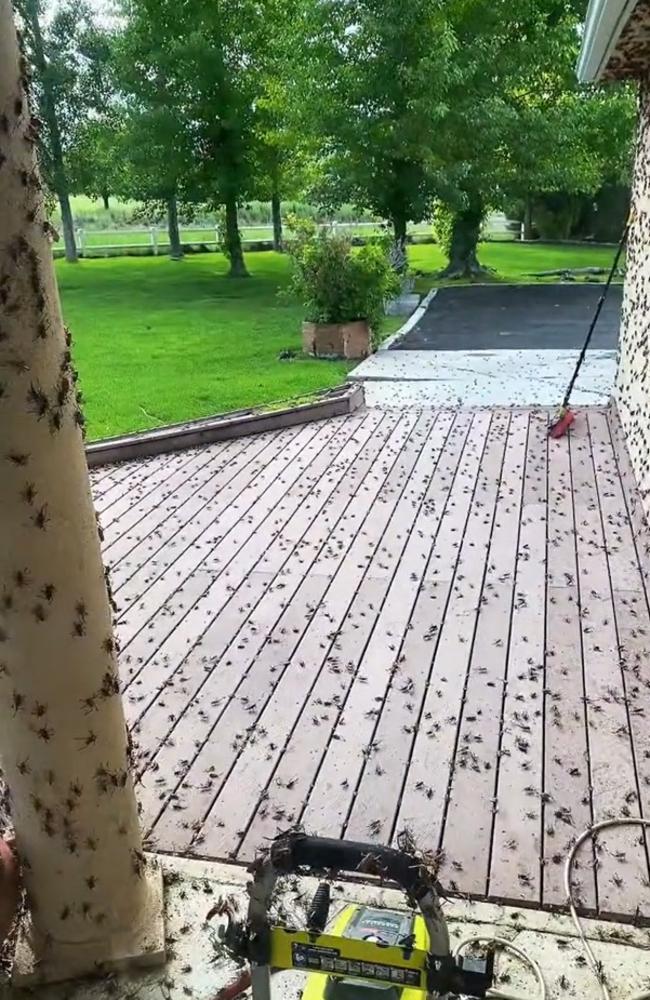Swarms of mormon crickets wreak havoc
Swarms of mormon crickets are wreaking havoc in this state, massing over fields, roads, homes and storefronts.

There is a lot to chirp about in Nevada
Swarms of Mormon crickets are wreaking havoc in northern Nevada, massing over fields, roads, homes and storefronts.
Gary Doherty, of Nevada told Utah publication ABC4 the side of his house was completely covered in the bugs and he spent an hour trying to clear them, to no avail.

“It is freaky. It is nerve-racking,” he told the outlet of the critters, which can grow up to two inches long.
“You couldn’t even open up the door or else you’d be flooded with crickets.”
Another resident of Spring Creek, Kyra Adams, posted a video to TikTok on May 14 titled “Mormon Cricket Invasion 2024,” which showed massive numbers of bugs covering sidewalks and roads.

At the end of the clip, which got more than 32,000 views, she warned, “Don’t forget to wipe the guts off your boots!”
“They cover our homes, buildings and when run over will bloody our roads and leave a horrible smell from sitting in the hot summer sun,” Adams told Storyful.
“Imagine you just want to go to church and this is what you see.”
The creatures, which are not actually crickets, but part of the shield-backed katydid subfamily, are also disrupting business for shop owners in the area.
“A flower shop has a certain aesthetic that doesn’t involve crickets being all over the building, jumping everywhere. This is the worst I have ever seen it since living here,” Kelsey Merchant, the owner of the Petal Merchant in Spring Creek, told the outlet.
The insects, which earned their moniker after they infested Mormon settlers’ fields in the 1800s, are native to Nevada and Utah.

Last year, The Post reported on an infestation of Mormon crickets at a home in Elko, Nevada, which got 2.3 million views on TikTok.
“They are foul, vile, stinky, disgusting carnivorous, cannibalistic crickets — huge ones,” the homeowner Colette Reynolds told The Post at the time.
“It’s disgusting. We’d killed maybe like 5,000 of them. And the next day it was 10 times worse … I’m a prisoner in my own home.”
This article originally appeared on the New York Post and was reproduced with permission





